“I happen to always want to go further and get moving. Each boat that leaves makes me want to be on board. Anywhere just so you don’t stay in one place too long. »
Summary
- Vienna, the golden prison
- Salzburg and Tyrol, to breathe
- Madeira, the escape
- Corfu, the rebirths
- Hungary, royal escapades
- France, in secret
- Switzerland, the last trip
To think of Sissi is to imagine Romy Schneider hurtling down the steps of a grand Viennese castle in a sumptuous dress. Because the famous film trilogy, having made Sissi an icon, shows on screen a pugnacious empress who marked the history of the Austro-Hungarian Empire. But of his personal life, however, we do not know much.
Because Sissi loved fashion and horse riding. She loved to write poems and take long walks in nature. Nevertheless, what most excited the Empress was to take to the open sea, to become a “sea gull” as she liked to call herself. Traveling was Sissi’s great love, a passion she inherited from her father.
Beyond a need for adventures, the journeys were also a way for the Empress to escape the shackles of the Viennese court and an unhappy “love” marriage. From Portugal to Greece, via France, Italy and Hungary: Sissi’s great expeditions allow her to emancipate herself from a role she does not want, to flee the responsibilities that deprive her of her freedom.
We wanted to retrace some of his most beautiful journeys by showing you another little-known facet of Sissi. And, perhaps, make you want to discover in your turn these marvelous places which keep, even today, a well anchored trace of the passage of the empress.
Vienna , the golden prison
In 1854, the young Duchess of Bavaria Elisabeth of Wittelsbach (“Sissi”), then aged 16, married the Austro-Hungarian Emperor, Franz Joseph I. Their union is celebrated at the Augustinian Church, located in the heart of Vienna. Now open to visitors, the latter was the favorite place for each wedding of the famous Habsourg dynasty.
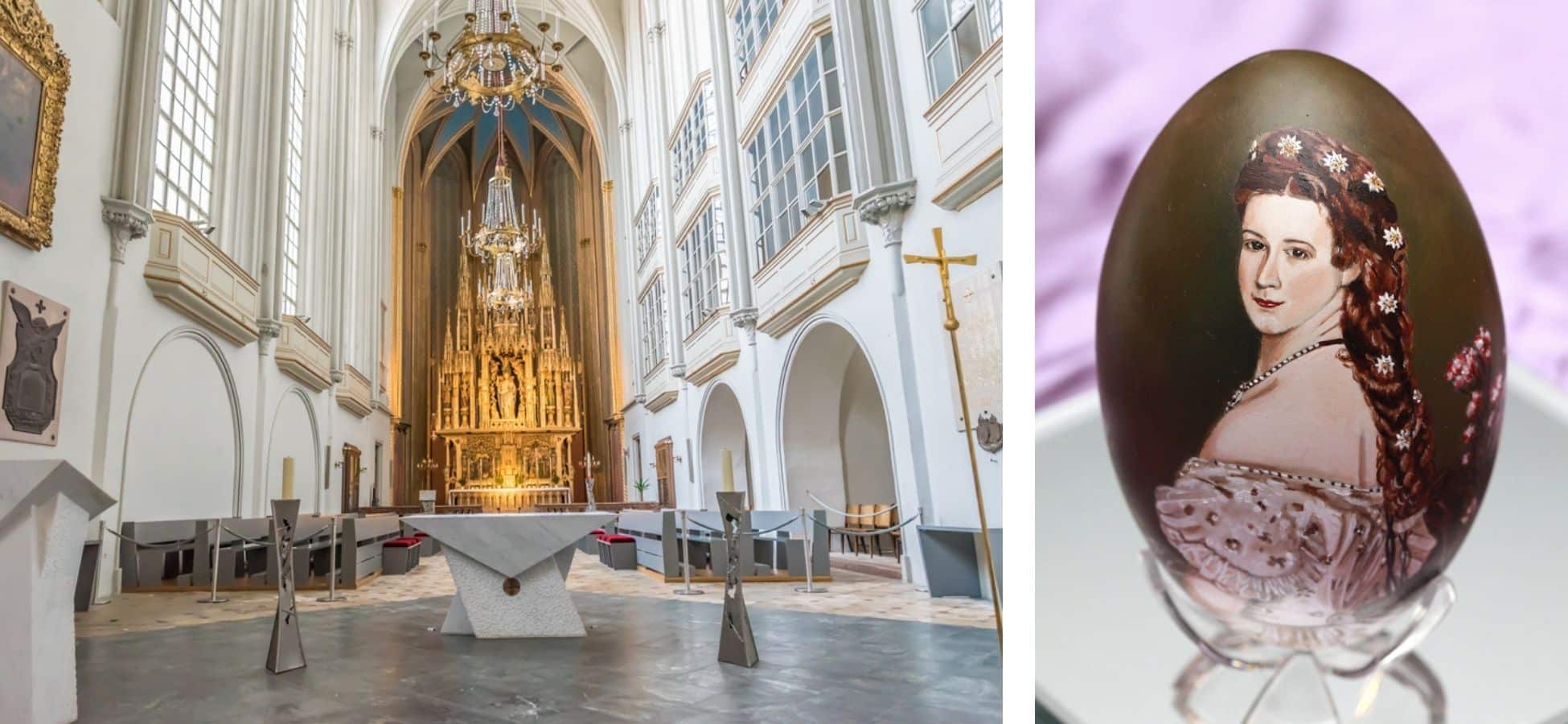
Augustinian Church in Vienna – Portrait of Sissi – Photo credit: Shutterstock – Takashi Images & Nancy Beijersbergen
A young bride at the court of Vienna, Sissi tries to conform to etiquette, under the yoke of a tyrannical and intrusive mother-in-law. Quickly, her husband left the marital cocoon, preoccupied with his duties and responsibilities in the midst of the Crimean War .
It is in this context that this singular pilgrimage around Sissi begins. The Austrian capital indeed represents the beginning of the popularity of the Empress and the appearance of the first symptoms of physical and mental ill-being which will lead her to escape regularly. For now, two places in Vienna provide a better understanding of Sissi’s life: Schönbrunn and Hofburg. We take you on a tour…
Schönbrunn Palace has been the imperial summer home of the Habsburgs for several generations, and was therefore Sissi’s residence for many years. Listed as a UNESCO World Heritage Site, Schönbrunn has also become one of the most visited tourist sites in Austria!
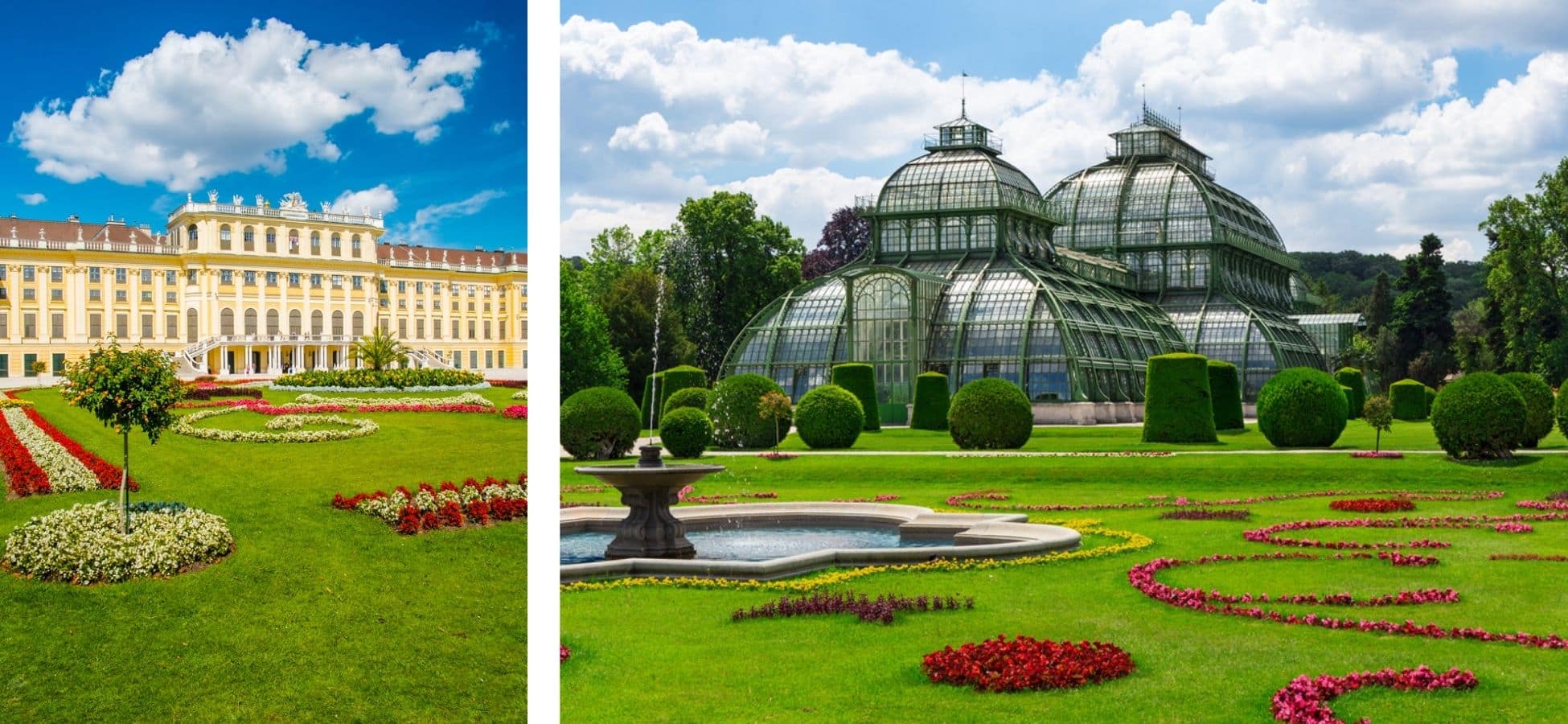
Hofburg Imperial Palace & Palm House in the garden of Schoenbrunn Palace, Vienna – Photo credit: Shutterstock – Todoran Andrei & pixelklex
If you decide to go to this huge building today, you will have the opportunity to visit more than fifty rooms with rococo decor and discover the wonderful gardens where the Empress liked to get some fresh air and play sports. Overlooking the site, the Gloriette also provides a breathtaking view.
And every winter, Sissi and her family move into the huge Hofburg Palace, right in downtown Vienna. As in Schönbrunn, the passage of Sissi has left many traces in this essential building to discover in Vienna. And despite Sissi’s unpopularity at the court of Vienna, causing her “austrophobia”, the city repented by installing the Sissi museum.
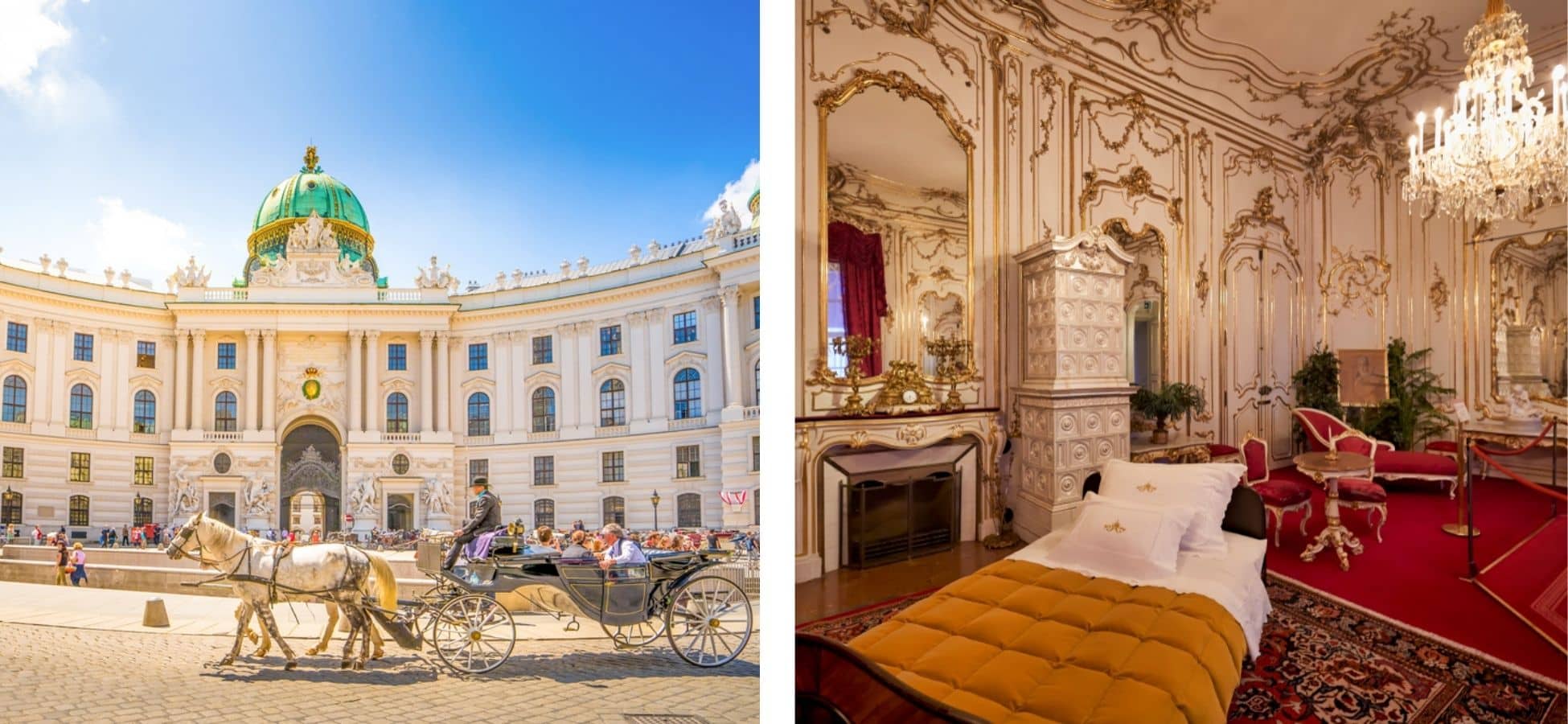
Hofburg Imperial Palace & Sissi Schoenbrunn’s apartment, Vienna – Photo credit: Shutterstock – Sina Ettmer Photography & marcobrivio.photo
Far from the glorification of an icon, it is the depressed Sissi, stuck in a life she hates, who appears here. Moreover, her apartments are not the same as those of her husband, so she must “announce” to see him. The Sissi Museum remains an opportunity to discover Sissi’s love for the fine arts, for her silhouette (there is a gym!) and for the clothing fashion of the time. And, of course, the place offers a first interview of Sissi’s travels abroad.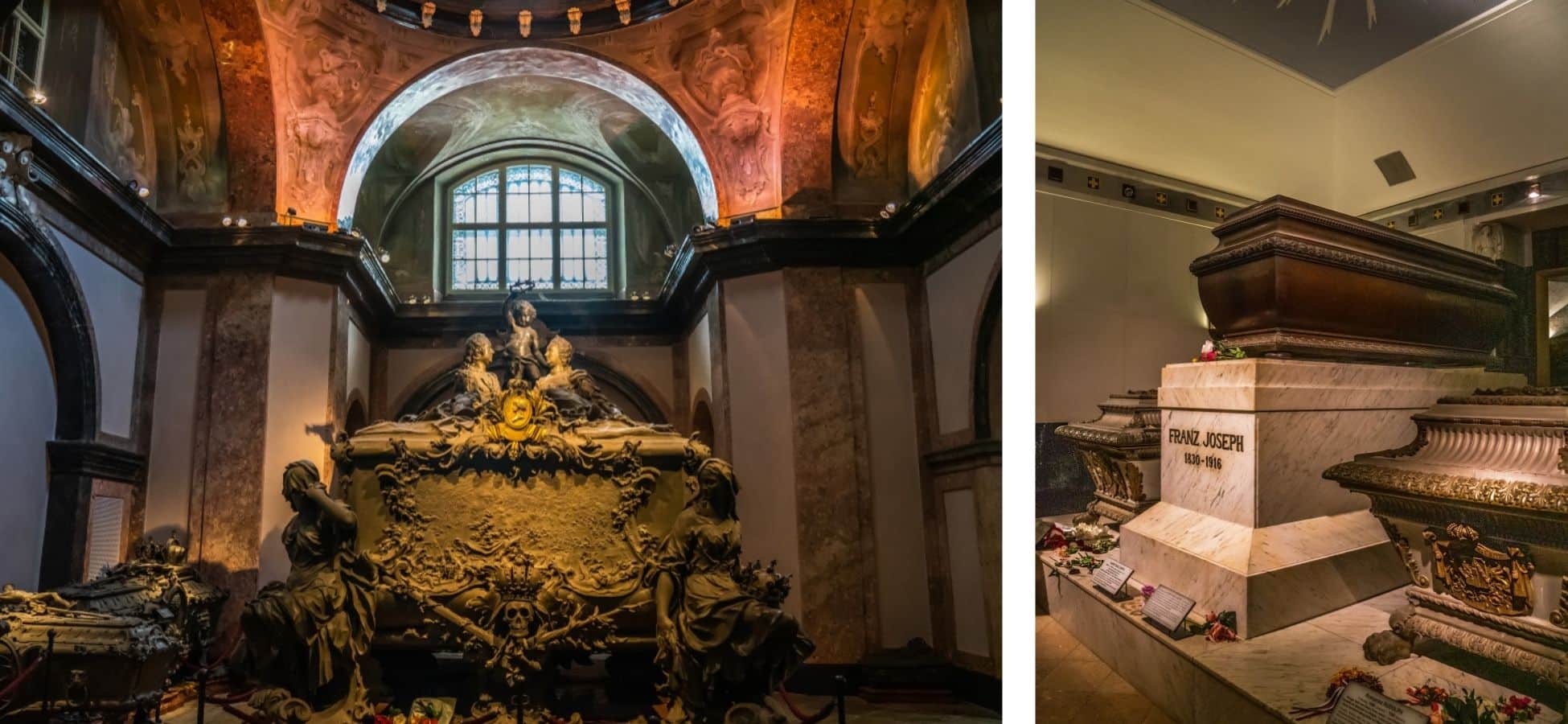
Imperial Crypt Vienna, in Vienna – Photo credit: Shutterstock – Alberto Zamorano
Finally, Vienna will remain the eternal city of Sissi since it is in the Austrian capital that the Empress rests after her assassination in 1898 in Geneva. The imperial crypt, open to the public, also allows you to discover the extraordinary Viennese funerary art.
Salzburg and Tyrol, to breathe
Apart from his Viennese life, where luxury rubs shoulders with loneliness, Sissi’s life is marked by numerous trips within the Empire itself. These escapades allow him to escape while being close to Vienna, and therefore remaining under high protection.
Located 2.5 hours by road from the capital, the city of Salzburg and its surroundings are important in the life of the Empress since she met her husband, François-Joseph, there in the 1850s. In Bad Ischl, precisely, Sissi reinvents herself as a poet in the imperial villa, while her husband goes hunting.
His poems, allowing to embrace his melancholy, can be found in Le Journal Poétique de Sissi . Thus, the spa resort of Bad Ischl then represents an oasis where Sissi can rest and enjoy a magnificent setting in the heart of a mountainous region.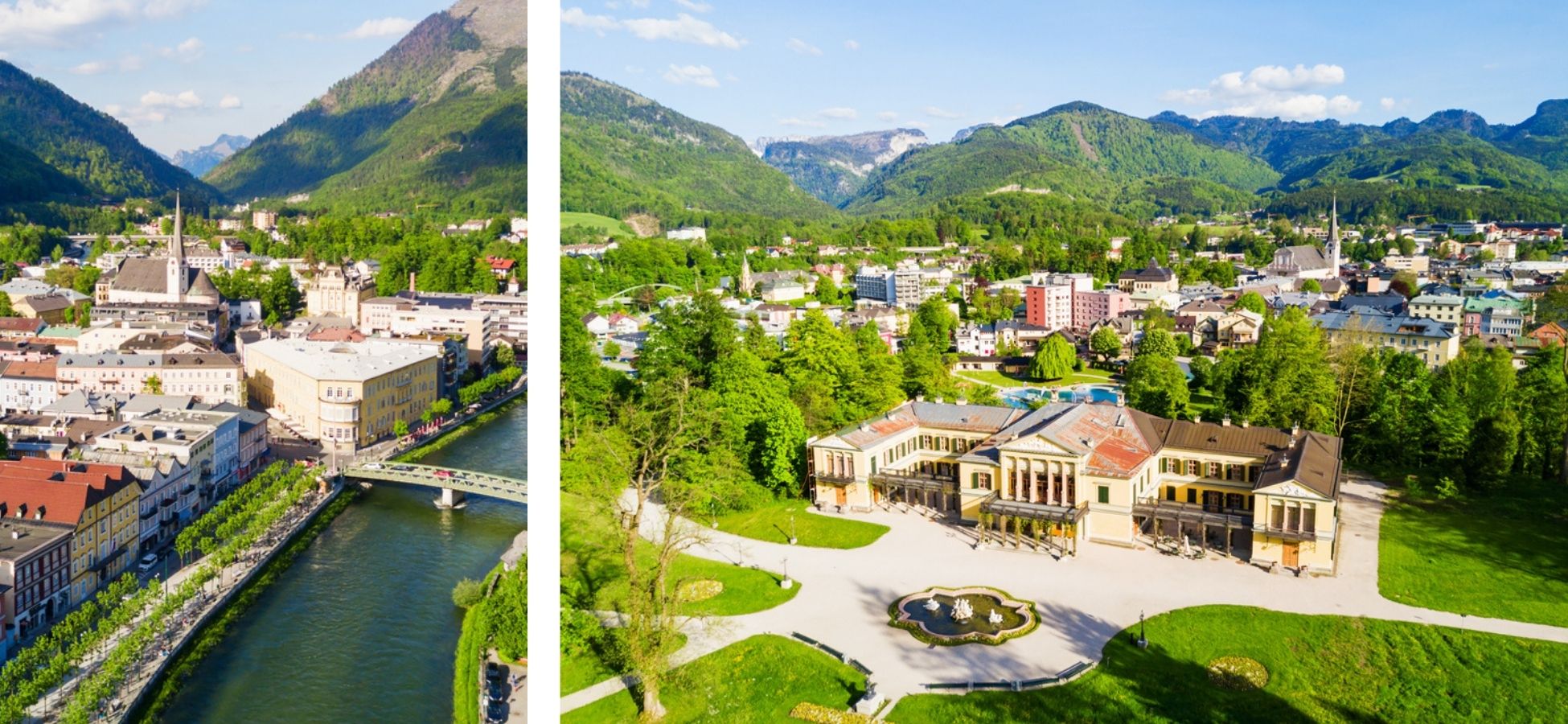
View of the seaside resort of Bad Ischl – Photo credit: Shutterstock – saiko3p
In addition, Sissi regularly travels to the Austrian Tyrol region, notably to Innsbruck where she enjoys a sumptuous imperial palace in an idyllic setting. Close to nature, the city allowed the empress, obsessed with sport and her physique, to cover her 30 kilometers daily.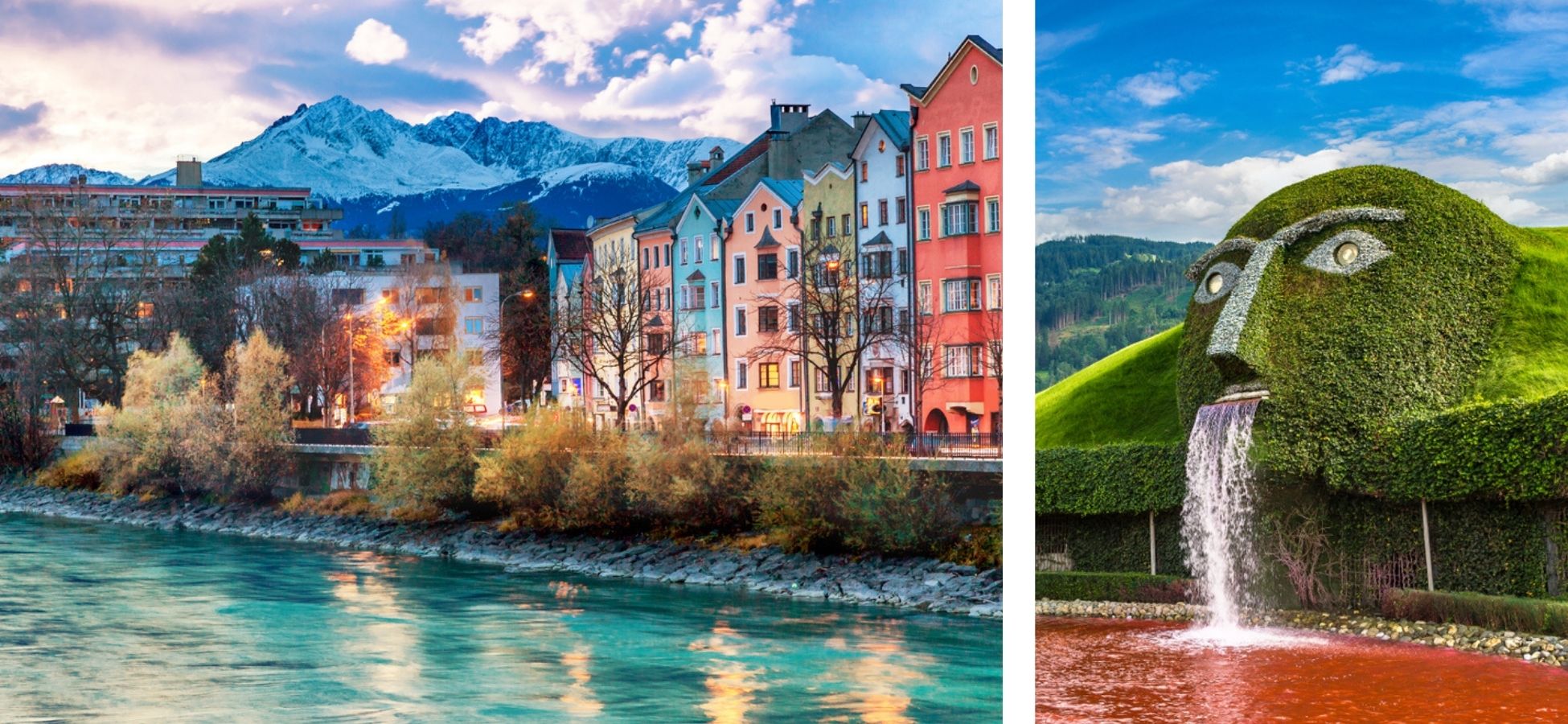
Innsbruck, capital of Tyrol – Photo credit: Shutterstock – Olesya Kuznetsova & SF
Further south, in what is today the Italian part of Tyrol, Sissi organized numerous trips to take advantage of the Mediterranean climate of Merano. There, a sort of path, the “Sissi-Weg”, was laid out for him, surrounded by one of the most beautiful gardens in Europe.
This path ends in Trauttmansdorff Castle, where Sissi stayed for two winters in the 1870s. She also decides to have a good time in the arsenic- and iron-rich thermal baths of Trent to restore her health.
Trauttmansdorff Castle Botanical Gardens – Photo credit: Shutterstock – Alizada Studios & footageclips
Madeira , the escape
In the late 1850s, Sissi fell seriously ill, or at least claimed to be. She says she is exhausted, and coughs a lot. The doctors encourage her to take a cure in southern Dalmatia, which she refuses. Indeed, what Sissi wants is to leave the Empire where she is hated, no matter how safe she is.
Driven by this need for freedom, the Empress left for Madeira, a Portuguese island located in an archipelago in the Atlantic Ocean, off the northwest coast of Africa. The Queen of England, Queen Victoria, lent him a yacht for a departure on November 17, 1860 from Trieste.
Camara de Lobos & Madeira – Photo credit: Shutterstock – Balate Dorin & Mertens
The so-called “island of flowers” represents an open-air dispensary for Sissi. It is the ideal place to take care of his physical health, but also and above all the depression that is eating away at him. Several studies prove that Sissi is not only depressed, but also anorexic and addicted to certain substances.
Her condition worsened with the premature loss of her 2-year-old daughter a few years earlier. Marked by the event, she sinks into a deep melancholy that only Madeira seems to be able to appease at that moment.
On the island, Sissi discovers the Quinta Vigia, traditional Madeiran accommodation where she puts down her suitcases for the time of a convalescence which will last five months. This magnificent residence, with breathtaking views of the sea and the port, is located in the heart of Funchal, the capital of the island. It is easy to imagine the Empress strolling in the garden of her residence, which you can in turn discover today.
Statue of Empress Sissi in Funchal, and Funchal Botanical Garden – Photo credit: Shutterstock – Thomas Marchhart & Travel Faery
Far from the obligations relating to her status, Sissi spends her days in this oasis of vegetation, where the flora is luxuriant, to the sound of the parakeets and parrots she takes care of. To pay homage to him, a statue of Sissi was erected in the garden of Funchal, thus recalling the passage of the Empress in this little paradise.
Today, Funchal is still a high place of tourism where life is good. Although urbanized, the city has kept a cachet of yesteryear, such as old buildings, cobbled streets or ironwork balconies.
The markets are essential to discover in Funchal, as well as the cellars, since Madeira wine is particularly famous! Walking through the city, it is easy to understand why Sissi has made it her El Dorado.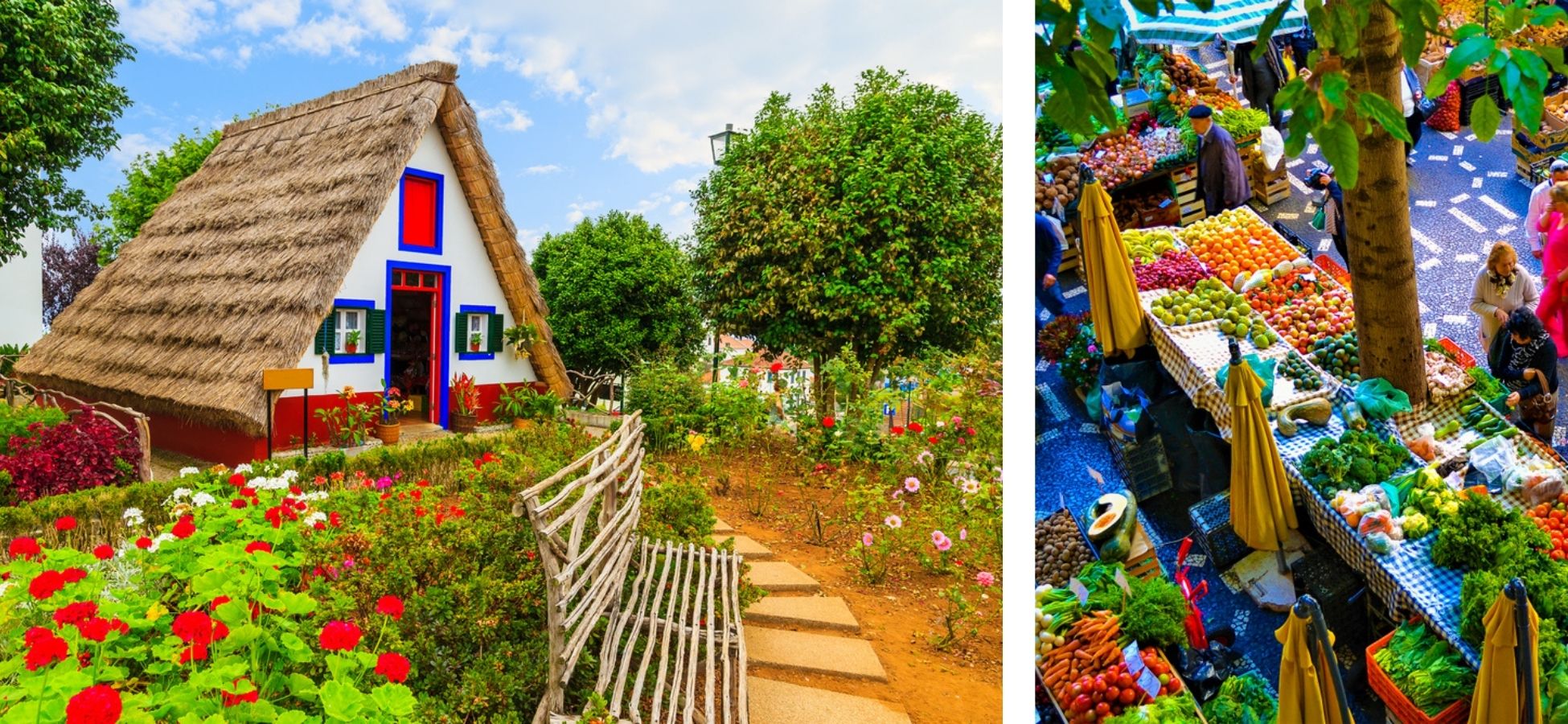
Traditional Madeiran house and market – Photo credit: Shutterstock – Pawel Kazmierczak & Vadim Illarionov
The island is particularly wild, which allows the Empress to continue her long walks outside of Funchal. Indeed, Madeira is full of panoramas, each more beautiful than the next! We imagine Sissi climbing the famous Cape Girão, a 600 meter high cliff that offers breathtaking views of the Mediterranean. There is the Pico Ruivo, which makes “fly above the clouds” and represents the highest point of the island.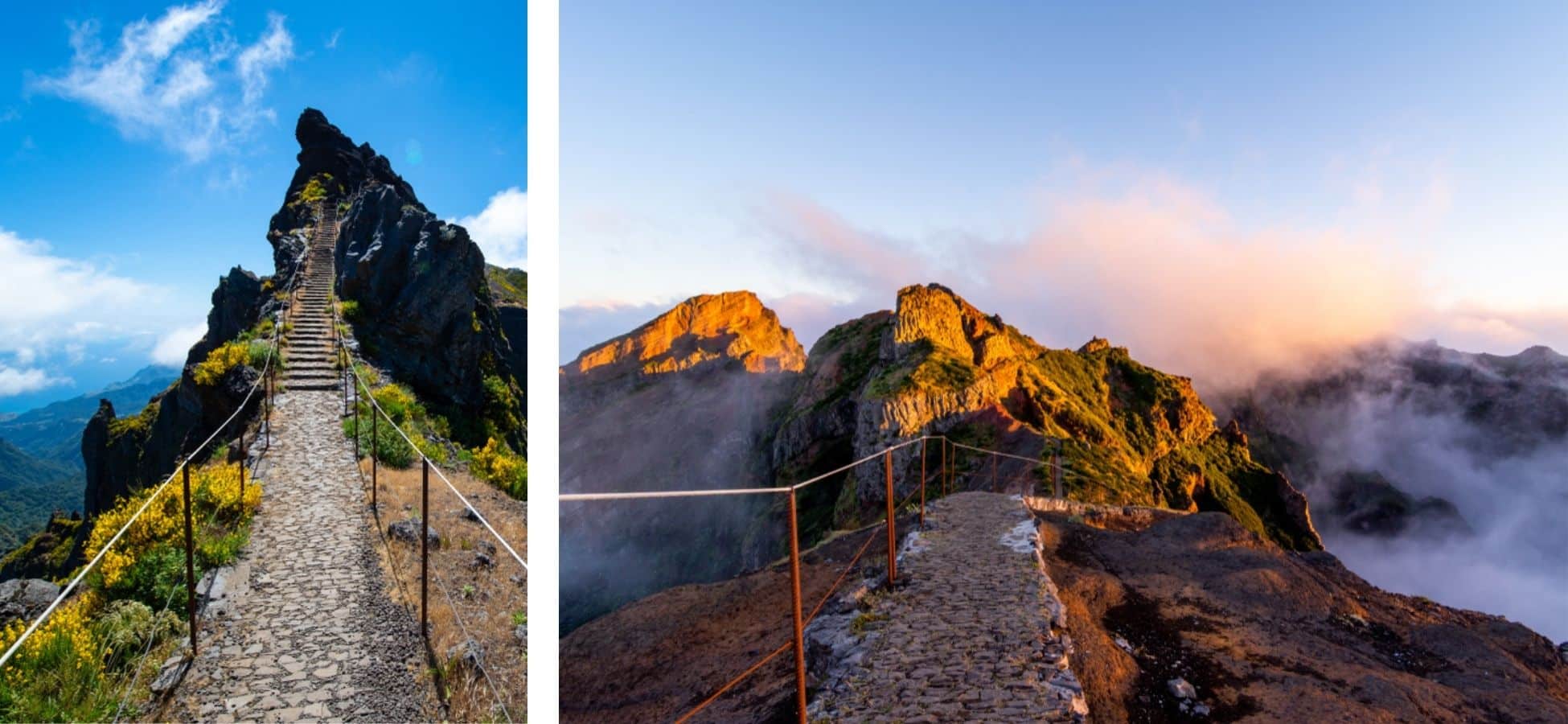
Pico do Arieiro – Crédit photo : Shutterstock – Foto Matevz Lavric & Synergic Works OU
If you go to Madeira, you can also try canyoning in the Ribeira das Cales. There, there is a splendid valley that allows you to discover another facet of Madeira, where waterfalls rub shoulders with rocks.
This temporary exile in Madeira therefore allows Sissi to get some fresh air, but not only that. In memoirs, we learn that the Empress plays the mandolin and plays card games with men, as an insult to the etiquette of the time.
Corfu , the rebirths
After her stay in Madeira, Sissi returned to Vienna in April 1860. The return to court, where she was still hated, again plunged her into terrible ill-being. Worse still, his mother-in-law never ceases to want to control his life, which annoys him on a daily basis.
Exhausted, Sissi decides to leave Vienna again in May 1861 to discover Corfu, a Greek island in the Ionian Sea. With many small rivers, three large lagoons, and nature as rich as it is peaceful, the place is once again idyllic for the ailing Empress. Also, the climate is mild as in Madeira.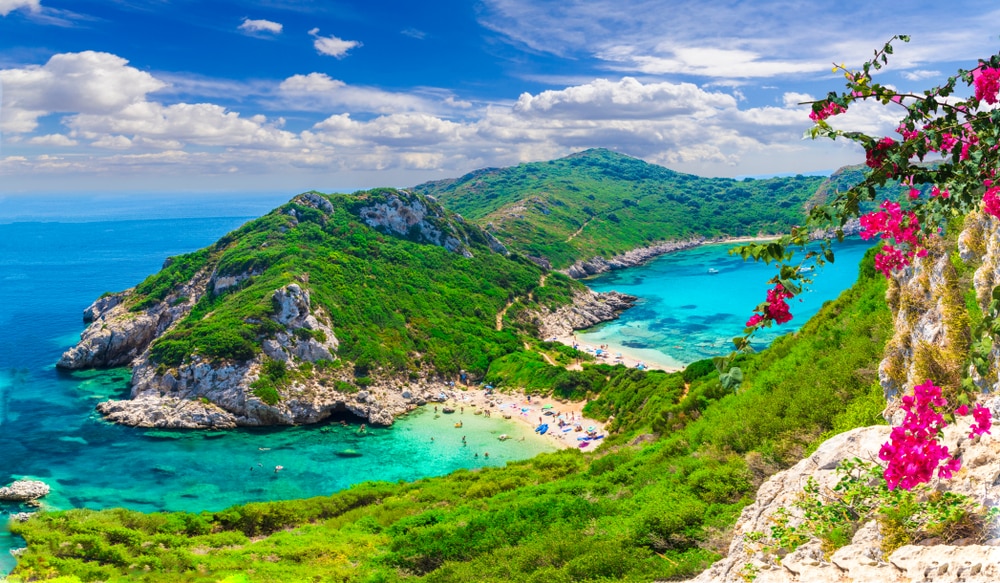
Porto Timoni, Afionas area, Corfu – Photo credit: Shutterstock – Balate Dorin
After a first trip to Corfu in 1861, Sissi fell in love with the island. She therefore decides to return there many times. Fascinated by Homer and The Odyssey , Sissi wishes to follow in the footsteps of Ulysses. She therefore began studying ancient and modern Greek and settled on the eastern coast of Corfu, in Villa Vraila, which she bought in 1888 to make a palace.
The Italian architect Raffaele Caritto transforms the place which becomes the Achilleion, imperial palace in homage to the work of Homer. Sissi decides to install Greek statues in the garden, as well as sculptures of centaurs, and columns. Because with the Achilleion, Sissi above all pays homage to mythology.
Photo credit: Shutterstock – Ivo Pop & jocic
Upon Sissi’s death, Emperor William II of Germany bought the Achilleion. Finally, the building successively became a museum, a school, a casino, and a diplomatic palace from the interwar period. Today, the Achilleion is open to visitors, and provides a good overview of Sissi’s hellenophilia. The palace is large enough to make the visit particularly dense.
First, the Empress Room allows you to go back in time to a bygone era. There is traditional 19th century furniture and important paintings for Sissi: that of the Miramare castle in Trieste, where Sissi resided, and some Italian porcelain.
In the rococo-style dining room, the theme of Homer’s Odyssey is very present. On the wall is a painting of the meeting between Ulysses and Princess Nausicaa, for example. After the interior visit, it is the Garden of the Muses, the peristyle of the Muses and the wood that you absolutely must discover. The exterior is indeed faithful to Sissi’s love for lush gardens, for nature, and for animals. Finally, take the time to admire the view of the sea from the Achilleion belvedere.
Corfu will therefore have the magic necessary to rekindle the flame of life of a tormented Empress. Today, the Greek island is especially popular with curious tourists and mythology enthusiasts.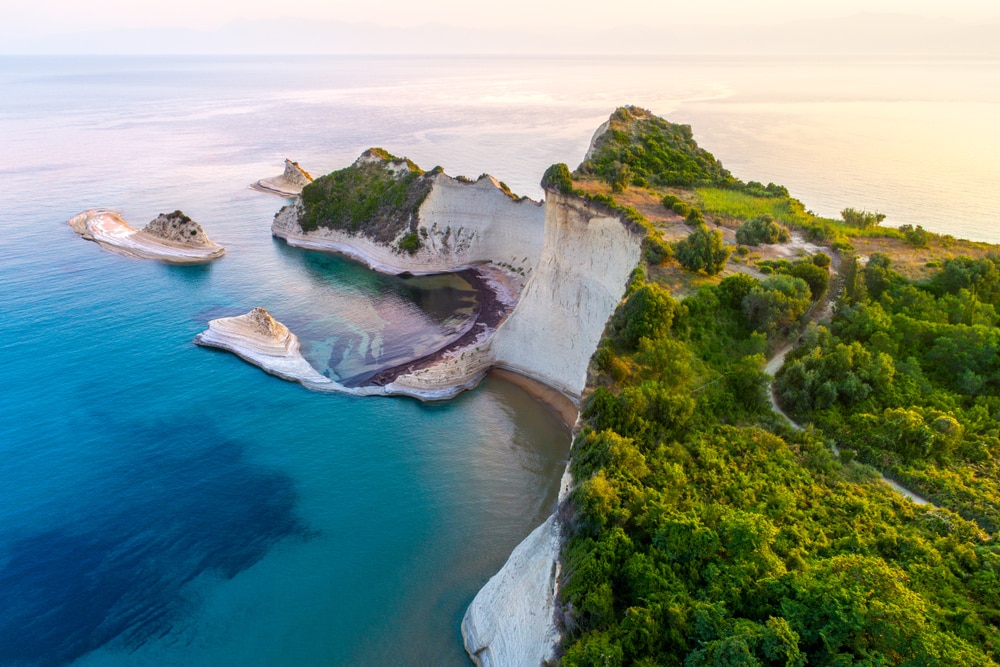
Beautiful view of Cape Drastis on the island of Corfu, Greece – Photo credit: Shutterstock – proslgn
It also welcomes all those who, like Sissi, need a gentle life and rest. Rich in a cultural mix and filled with legends, Corfu has become a must-see destination. In the footsteps of the Empress, stroll through the alleys of the old town or on the beaches of the island, Mirtiotissa or Nissaki and drown any sorrows in the turquoise water.
Moreover, if you are interested in mythology, organize a discovery of the rock of Ulysses on the peninsula of Kanoni. This small islet would be the place where the Greek hero would have stranded after fleeing the nymph Calypso. Other legends, including that of Homer, say that the rock was Odysseus’ boat, transformed by the God of the sea and oceans Poseidon, angry with Odysseus.
Hungary, royal escapades
Between his trips to Madeira and Corfu, and a few stays in Italy, it is ultimately a less exotic country that attracts Sissi: Hungary. Then attached to the Empire, Hungary is a new playground for the Empress who uses her power for the benefit of the Hungarian people (the Magyars) with whom she has great success. Motivated by this popular momentum, she decides to defend their freedom.
In 1867, she was crowned in Budapest and embarked on her new missions, such as that of the Austro-Hungarian compromise which made Budapest the second capital of the Empire with Vienna. The Queen of Hungary quickly learns the language and finds her new oasis of peace: Gödöllö Castle.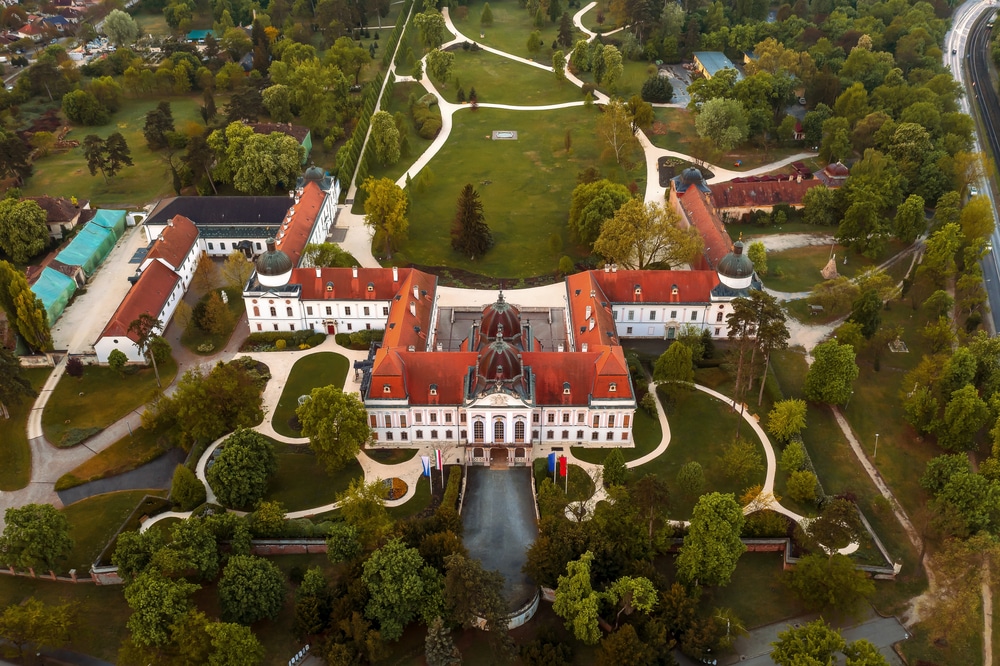
Photo credit: Shutterstock – Geza Kurka Photos
The marvelous Baroque building from the 18th century is located 35 kilometers east of Budapest. Sissi sought refuge there many times as her situation in Vienna worsened with depression, anorexia, unpopularity and marital disappointments.
It is therefore in Gödöllö that it is possible, nowadays, to interfere in the life of the Empress and discover her thousand and one passions. A visit to this “Hungarian Versailles” takes you into the majestic reception hall, bearing witness to a bygone era of pomp and feasting. The rooms and rooms all have period furniture and impressive works of art.
Because you have understood it by reading us so far: Sissi was a great lover of paintings. The Empress also had a soft spot for porcelain, as evidenced by one of the castle exhibits. With any luck, your visit to Gödöllö will introduce you to Sissi’s love for horse riding, practiced since a young age. Indeed, the castle organizes equestrian shows in the sumptuous gardens of ginkgos and sequoias.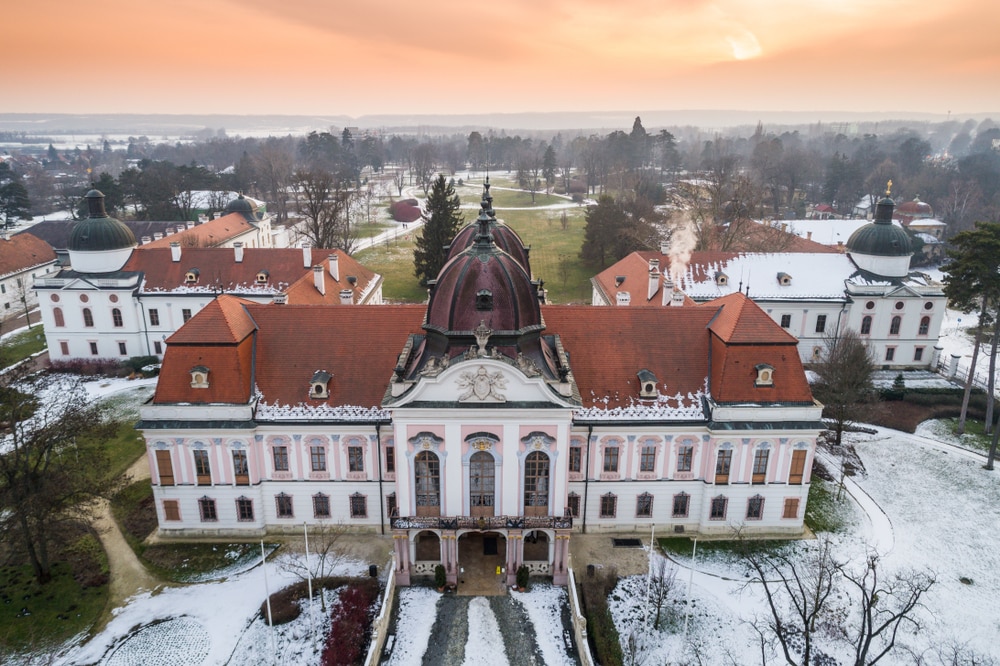
Crédit photo: Shutterstock – Istvan Csak
In Hungary, the aura of “Queen Erzsébet” floods the capital, Budapest. She frequents a few key spots in the city, such as the Ruszwurm teahouse, now two centuries old. The Empress, a lover of “beautiful things”, also likes to frequent the literary café New York, one of the most beautiful cafés in the world.
It was near this establishment, in the Pest district, that Sissi strolled. Part of the district has also been renamed “Elizabeth-ville”.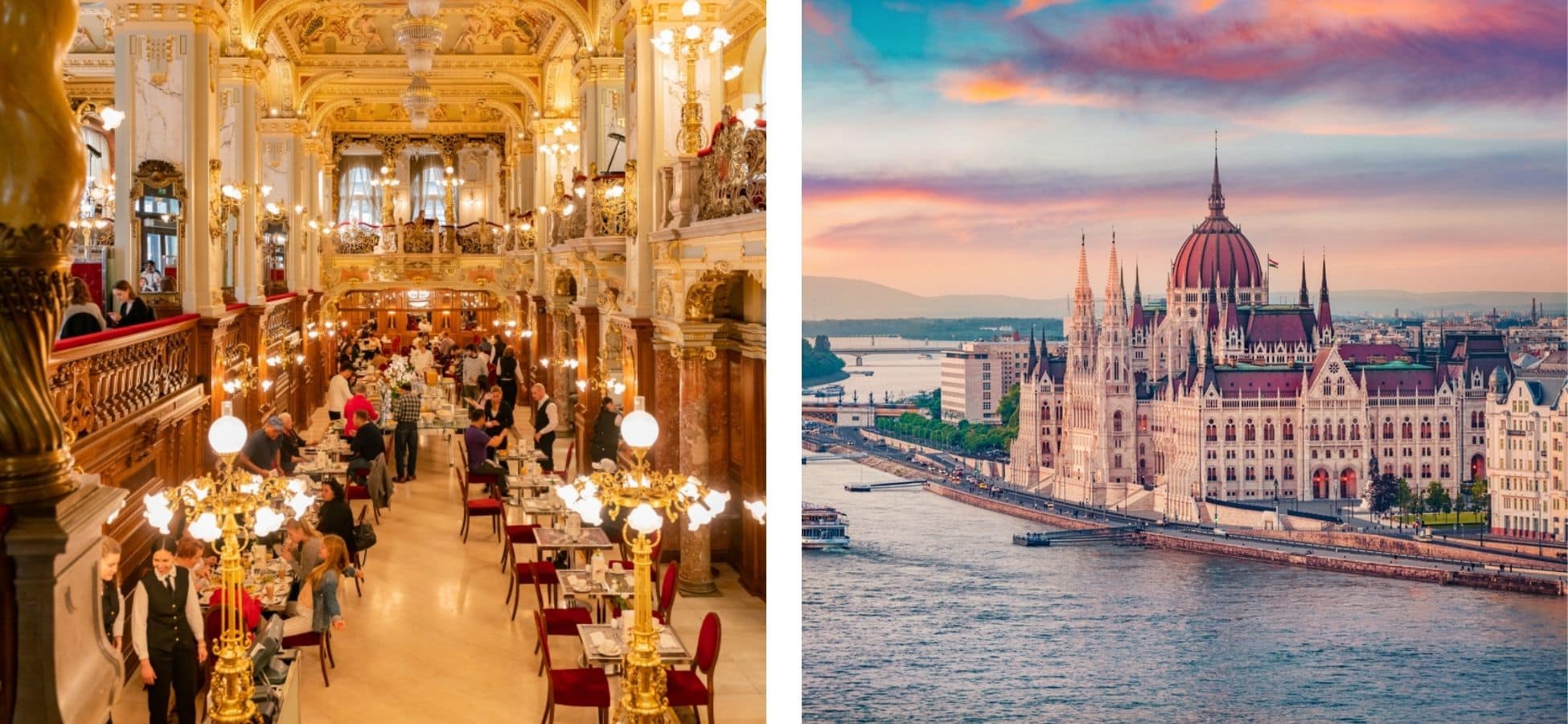
New York Palace Café & view of the Houses of Parliament, Budapest – Photo credit: Shutterstock – Kit Leong & Andrew Mayovskyy
Thus, Budapest is full of tributes to their queen. For example, the hills of Buda, offering an unobstructed panorama, were adorned with a Sissi gazebo. This massif is located west of Budapest and also allows you to discover another facet of the Hungarian capital.
France, in secret
During the summer of 1875, on the advice of her doctor, she decided to take the air in the French northwest, in Normandy. She settled in the castle of Sassetot-le-Mauconduit near Fécamp with Archduchess Valérie, her daughter. She goes there by train, however trying to remain “incognito”, despite the presence of her guard (of 70 people all the same).
In this village surrounded by nature, overlooking the woods, and close to the sea, Sissi takes the opportunity to continue her holiday routine: walks, poetry, horse riding and rest. She also enjoys many private baths, and sails sometimes on a luxurious yacht, sometimes on a modest fishing boat. Legend has it that the Empress also liked to visit local farmers to watch the cows being milked and share a moment. Rather rare, for a woman of her rank.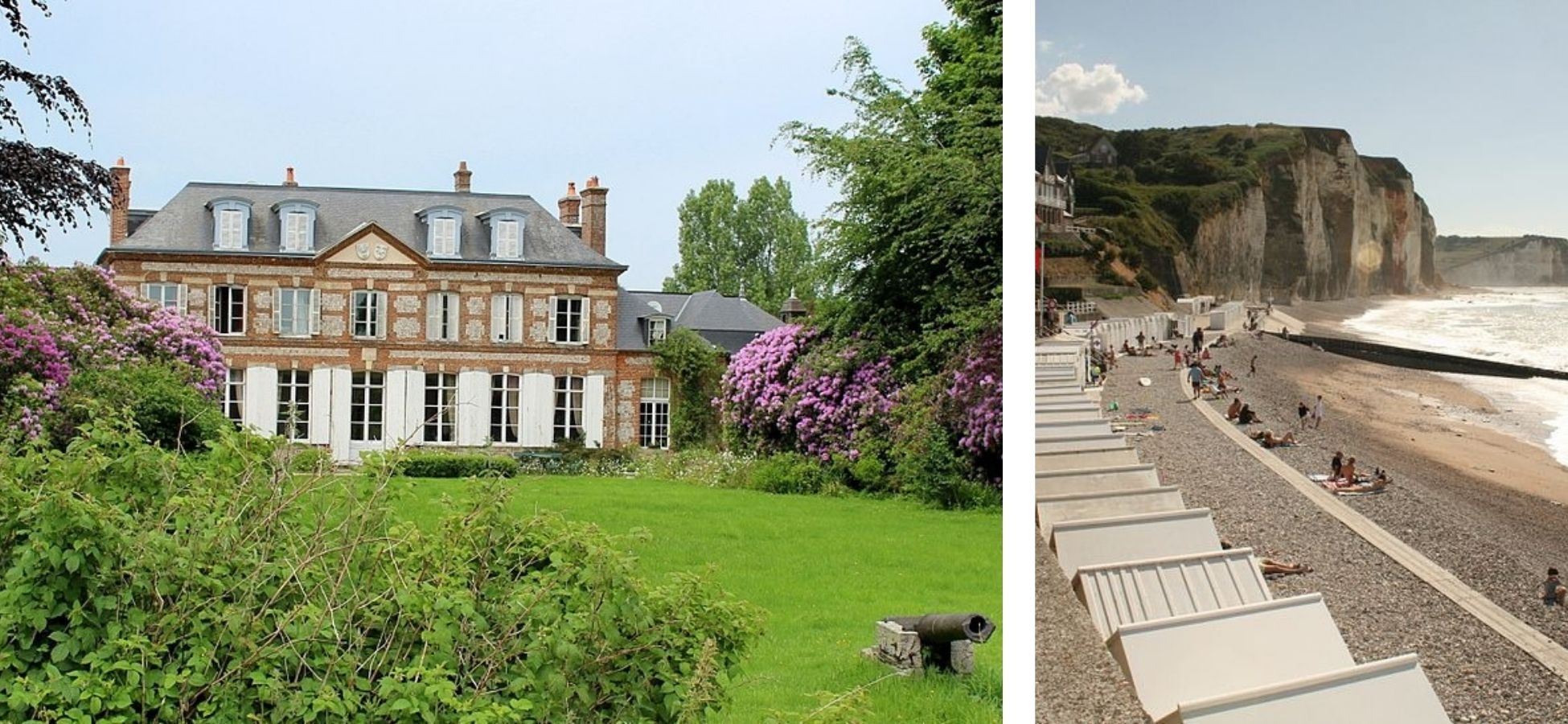
Manoir de Briquedalles & view of the Petites Dalles, France – Photo credit: Wikipedia – Paubry76 & JacoNed
In any case, Sassetot-le-Mauconduit remembers the visit of the Empress. Today known as the Château de Sissi, the building has become a charming hotel-restaurant where you can spend an absolutely royal stay.
At the end of the 19th century, and nearing his premature death, Sissi discovered Roquebrune-Cap-Martin in the south of France, between Menton and Monaco. From her visit, the witnesses of the time remember that Sissi got up at dawn and that she took an incalculable number of thalassotherapy baths. In Roquebrune-Cap-Martin, in the gardens of the Grand Hotel where she resides, she especially mourns the death of her son, Archduke Rodolph, who was assassinated.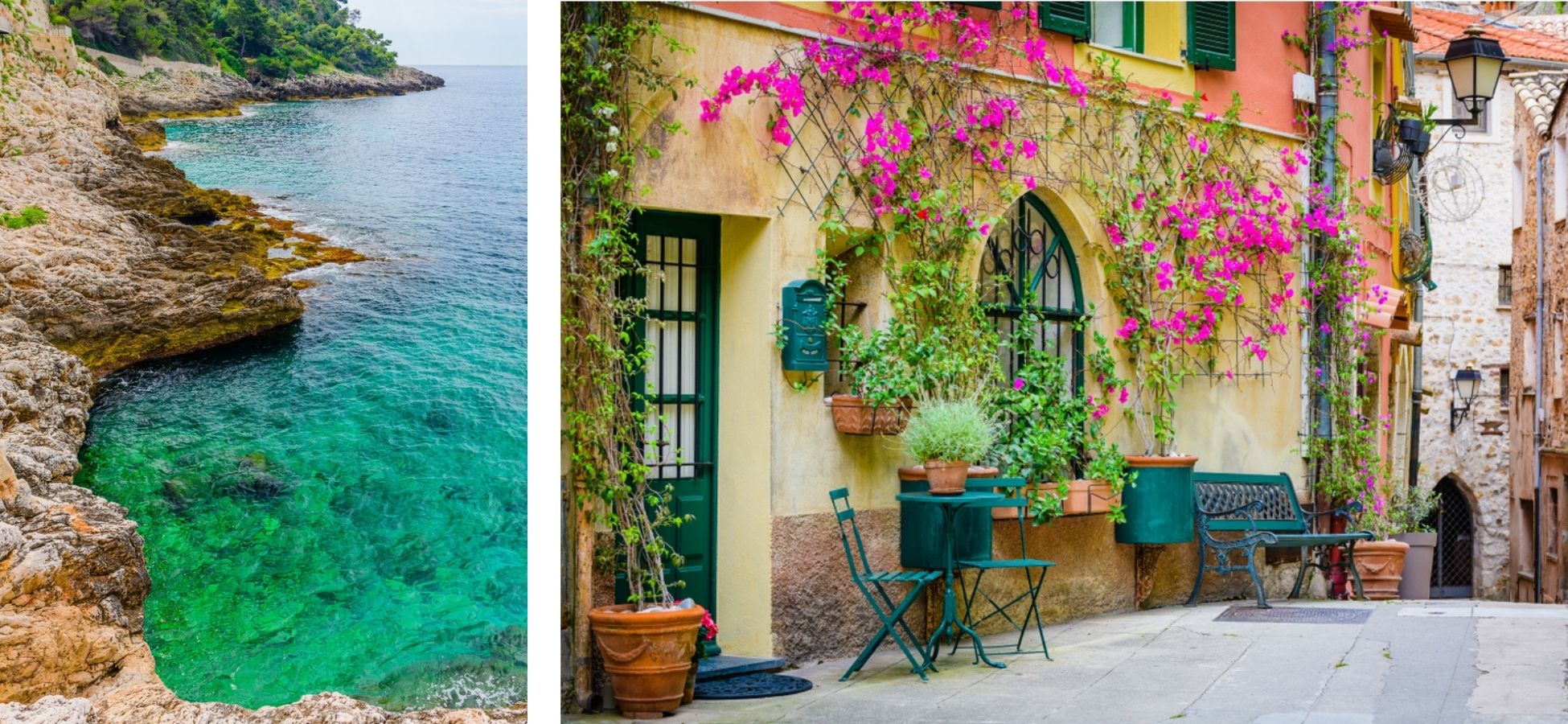
Roquebrune Cap-Martin – Photo credit: Shutterstock – alexilena
If you walk around Roquebrune-Cap-Martin today, take a walk around Square Sissi, in homage to the Empress’s visit to the city, inaugurated in 1899. A walk also allows you to build a historical circuit of about 45 minutes in the footsteps of Sissi’s passages through the city.
Switzerland, the last trip
The journey with the “Seagull” comes to an abrupt end in Switzerland. While visiting Baroness de Rothschild at the Beau Rivage hotel, she decides to return to Montreux. In front of the Geneva liner which must bring her back to her destination, she is stabbed by an Italian anarchist named Luigi Lucheni. On board the boat, the Empress is dying and then dies at the hotel. She was then 61 years old.
It is possible to see personal effects marking the last hours of the Empress, such as a ribbon stained with blood, at the Beau Rivage hotel. In the Notre-Dame basilica in Geneva, the features of the Empress are given to the portrait of Saint Elisabeth to pay her a new homage.
This final journey of Sissi ultimately reflects her entire existence: the Seagull dies dramatically, while traveling, and above all far from the court. But the soul of the Empress continues to live on the heights of Madeira, in the gardens of Corfu, in the heart of Normandy or in the cafes of Budapest. The Empress, a “travel influencer” from another era, constantly makes us want to leave the routine to discover the wonders of the world.
Did you like this article? Do not hesitate to share it on social networks and subscribe to Discover the World on Google News to not miss any articles!